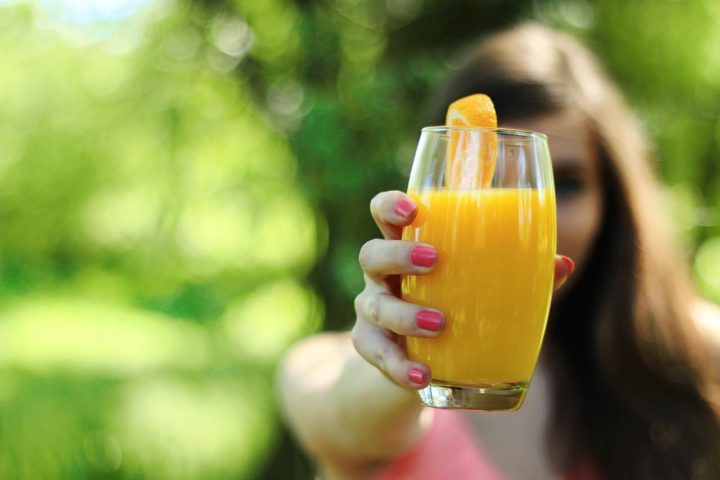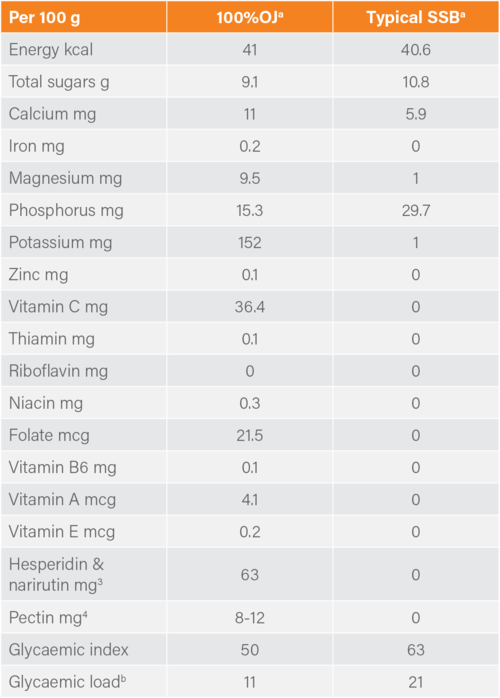Fruit juice across the lifecycle: adolescents


NUTRITION REQUIREMENTS AND CHALLENGES
According to the WHO, adolescents typically have the least healthy diets of any age group. Increased requirements for growth combined with reduced parental control create a gap between nutritional needs and intakes. This is also the time when breakfast skipping, alcohol use and sugar-sweetened soft drink consumption peak. Dietary issues include:
Rapid growth – Adolescents go through a major growth spurt, while peak bone mass is reached in the late teens or early twenties. Brain and emotional development may increase the need for minerals, such as iodine and calcium, and long chain omega-3 fatty acids.
Extreme eating habits – Breakfast skipping, veganism, faddy weight loss diets and very high protein diets for muscle gain are all more common in adolescence and may lead to sub-optimal nutrient intakes if not handled correctly.
Early pregnancy – A small proportion of adolescent girls become pregnant, which increases their nutritional requirements at a time when they are reaching full growth themselves.
Sport and performance – Many adolescents participate in regular sport and exercise, which adds to their nutritional needs.
Low fruit intakes – A large international study of nearly half a million young people revealed that, while fruit and vegetable consumption was slowly improving in many European countries, intakes were still far too low. Daily fruit consumption ranged from 15% to 49% of recommendations, while daily vegetable consumption ranged from 20% to 55%.
100% FRUIT JUICE: BENEFITS FOR ADOLESCENTS
100% ‘pure’ juice is made by squeezing or crushing fruit. This means that the nutritional composition reflects that of the fruit used in the processing. Nutrient values are similar whether juice is ‘from concentrate’ or ‘not from concentrate’. It is prohibited by European law to add sugars to 100% fruit juice regardless of the production method. 100% fruit juices are not the same as juice drinks or soft drinks, which may contain added sugar or artificial sweeteners.
The nutritional composition of 100% orange juice per 100 ml is shown below. One 150 ml glass contains 60 kcal (calories), 13.6 g of naturally occurring sugars and 55 mg of vitamin C. Values in blue represent official ‘source of’ claims that can be made on pack.

The nutrients found in 100% fruit juice have recognized roles in supporting normal health, as per EU authorized health claims.
- Folate supports normal psychological function and immune function, and contributes to a reduction in tiredness and fatigue.
- Vitamin C supports normal teeth, skin and gums, and supports bone health by contributing to normal collagen. Vitamin C also increases iron absorption.
- Adolescent girls may have low iron intakes and poor iron status leading to an increased risk of iron deficiency.
- Potassium contributes to normal functioning of the nervous system and supports normal muscle function and blood pressure In the body, 100% fruit juice behaves differently to sugar-sweetened soft drinks in terms of glycemic control, so it is not correct to classify them in the same way.
Evidence from randomized controlled trials shows that:
- 100% orange juice has a similar glycemic index (GI) to whole oranges (50 versus 43) and both are classed as low GI. In addition, 100% fruit juice has no significant impact on glucose control, insulin sensitivity or risk of type 2 diabetes according to a meta-analysis.
- 100% orange juice has significantly more favorable effects on fat mass and glycemic control than a sugar-sweetened soft drink.
- 100% orange juice has no impact on body weight or fat when consumed daily. There is no evidence that 100% fruit juices contribute to obesity in children or adolescents.
INCLUDING FRUIT JUICE IN THE DIET
The American Academy of Pediatrics[x] advises that older children and adolescents (7-18 years of age) can drink up to 235 ml of pure fruit juice daily.
Since vitamin C enhances the bioavailability of non-haem iron (for example from fortified foods, supplements and green leafy vegetables)13, fruit juice is best consumed with a meal. This can also minimise any potential impact on tooth enamel.
TIPS FOR PATIENTS
Fruit Juice Matters has created a linked one-page leaflet, Why fruit juice? FOR ADOLESCENTS, which you may find useful to give to your patients. Click here to download a copy.

